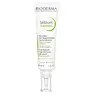What's inside
What's inside
 Key Ingredients
Key Ingredients

 Benefits
Benefits

 Concerns
Concerns

 Ingredients Side-by-side
Ingredients Side-by-side

Water
Skin ConditioningDi-C12-13 Alkyl Malate
EmollientPropanediol
SolventPropylheptyl Caprylate
EmollientGlycerin
HumectantSalicylic Acid
MaskingSodium Polyacryloyldimethyl Taurate
Emulsion StabilisingArachidyl Alcohol
EmollientDimethicone
EmollientCetearyl Alcohol
EmollientBehenyl Alcohol
EmollientCoco-Glucoside
CleansingArachidyl Glucoside
EmulsifyingSodium Hydroxide
BufferingSodium Citrate
BufferingChondrus Crispus Extract
Skin ConditioningMannitol
HumectantPropyl Gallate
AntioxidantXylitol
HumectantRhamnose
HumectantSodium Metabisulfite
AntioxidantTocopherol
AntioxidantParfum
MaskingWater, Di-C12-13 Alkyl Malate, Propanediol, Propylheptyl Caprylate, Glycerin, Salicylic Acid, Sodium Polyacryloyldimethyl Taurate, Arachidyl Alcohol, Dimethicone, Cetearyl Alcohol, Behenyl Alcohol, Coco-Glucoside, Arachidyl Glucoside, Sodium Hydroxide, Sodium Citrate, Chondrus Crispus Extract, Mannitol, Propyl Gallate, Xylitol, Rhamnose, Sodium Metabisulfite, Tocopherol, Parfum
Water
Skin ConditioningCetearyl Alcohol
EmollientPetrolatum
EmollientGlycerin
HumectantLactic Acid
BufferingPropanediol
SolventTitanium Dioxide
Cosmetic ColorantIsopropyl Myristate
EmollientSodium Cetearyl Sulfate
CleansingSodium Hydroxide
BufferingSodium Benzoate
MaskingRosmarinus Officinalis Flower Oil
PerfumingMaclura Cochinchinensis Leaf Extract
Skin ConditioningLimonene
Perfuming
 Reviews
Reviews

Ingredients Explained
These ingredients are found in both products.
Ingredients higher up in an ingredient list are typically present in a larger amount.
Cetearyl alcohol is a mixture of two fatty alcohols: cetyl alcohol and stearyl alcohol. It is mainly used as an emulsifier. Emulsifiers help prevent the separation of oils and products. Due to its composition, it can also be used to thicken a product or help create foam.
Cetearyl alcohol is an emollient. Emollients help soothe and hydrate the skin by trapping moisture.
Studies show Cetearyl alcohol is non-toxic and non-irritating. The FDA allows products labeled "alcohol-free" to have fatty alcohols.
This ingredient is usually derived from plant oils such as palm, vegetable, or coconut oils. There is debate on whether this ingredient will cause acne.
Due to the fatty acid base, this ingredient may not be Malassezia folliculitis safe.
Learn more about Cetearyl AlcoholGlycerin is already naturally found in your skin. It helps moisturize and protect your skin.
A study from 2016 found glycerin to be more effective as a humectant than AHAs and hyaluronic acid.
As a humectant, it helps the skin stay hydrated by pulling moisture to your skin. The low molecular weight of glycerin allows it to pull moisture into the deeper layers of your skin.
Hydrated skin improves your skin barrier; Your skin barrier helps protect against irritants and bacteria.
Glycerin has also been found to have antimicrobial and antiviral properties. Due to these properties, glycerin is often used in wound and burn treatments.
In cosmetics, glycerin is usually derived from plants such as soybean or palm. However, it can also be sourced from animals, such as tallow or animal fat.
This ingredient is organic, colorless, odorless, and non-toxic.
Glycerin is the name for this ingredient in American English. British English uses Glycerol/Glycerine.
Learn more about GlycerinPropanediol is an all-star ingredient. It softens, hydrates, and smooths the skin.
It’s often used to:
Propanediol is not likely to cause sensitivity and considered safe to use. It is derived from corn or petroleum with a clear color and no scent.
Learn more about PropanediolSodium Hydroxide is also known as lye or caustic soda. It is used to adjust the pH of products; many ingredients require a specific pH to be effective.
In small amounts, sodium hydroxide is considered safe to use. However, large amounts may cause chemical burns due to its high alkaline.
Your skin has a natural pH and acid mantle. This acid mantle helps prevent harmful bacteria from breaking through. The acid mantle also helps keep your skin hydrated.
"Alkaline" refers to a high pH level. A low pH level would be considered acidic.
Learn more about Sodium HydroxideWater. It's the most common cosmetic ingredient of all. You'll usually see it at the top of ingredient lists, meaning that it makes up the largest part of the product.
So why is it so popular? Water most often acts as a solvent - this means that it helps dissolve other ingredients into the formulation.
You'll also recognize water as that liquid we all need to stay alive. If you see this, drink a glass of water. Stay hydrated!
Learn more about Water